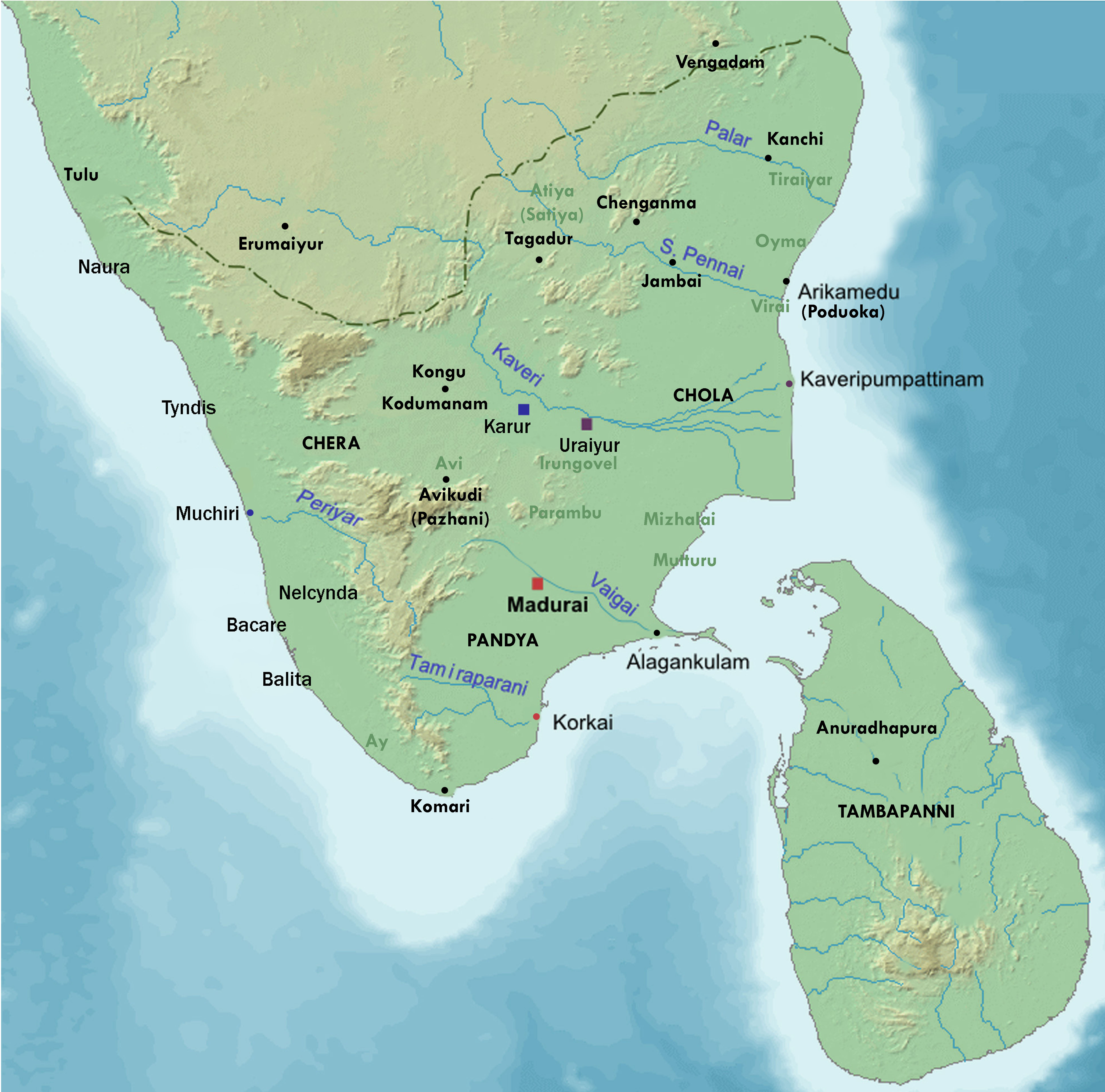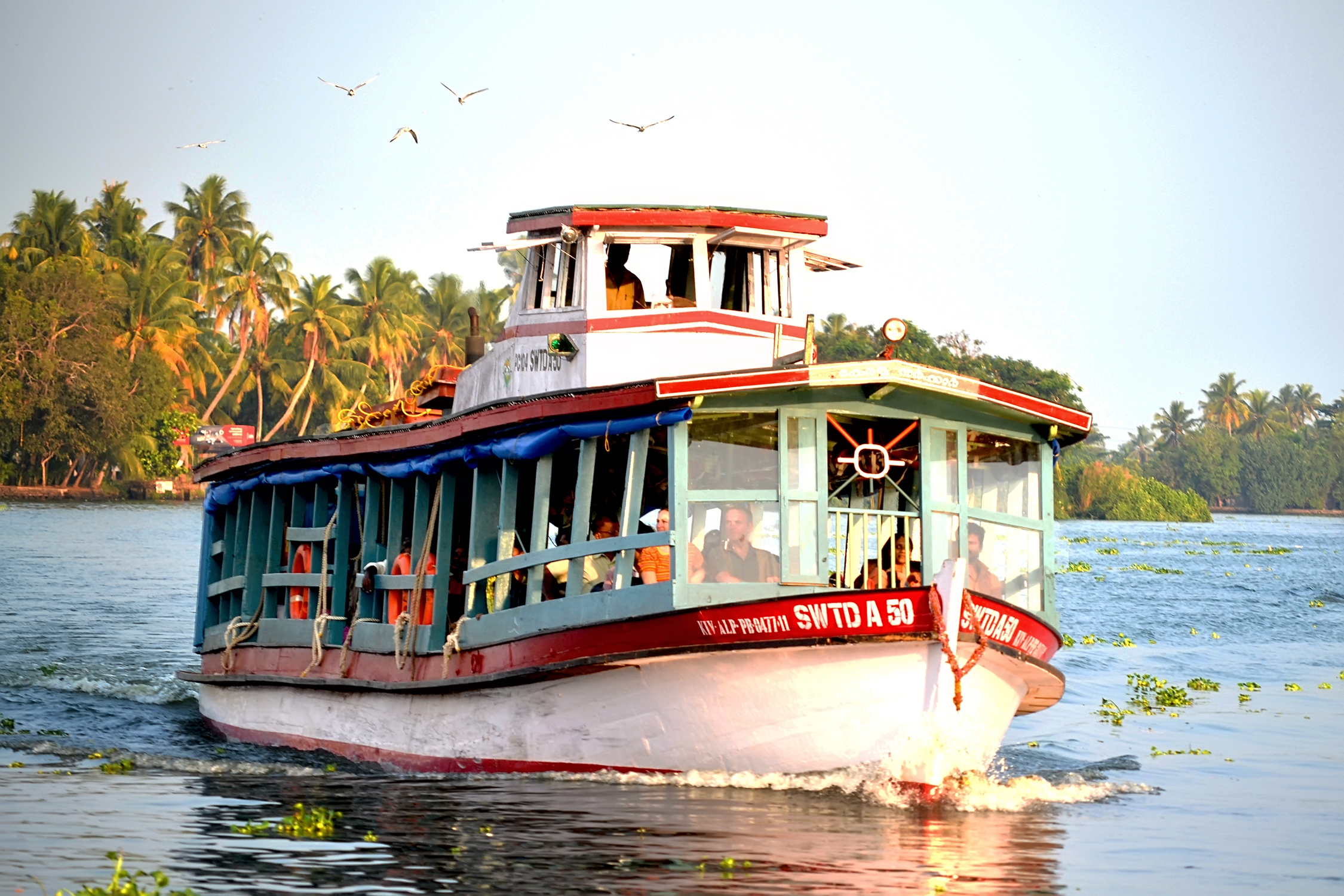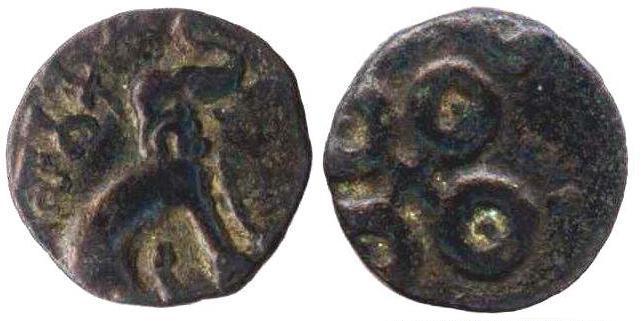|
Cenkuttuvan
Cheran Chenkuttuvan ( ml, ചേരൻ ചെങ്കുട്ടുവൻ ; ta, சேரன் செங்குட்டுவன்) (''c.'' 2nd century CE), literally 'the Alluring Kuttuvan Chera', identified with Katal Pirakottiya Vel Kezhu Kuttuvan,K.G. Sesha Aiyar, ''Chera Kings of the Sangam Period'', London, 1937. 21-23. was the most celebrated Chera dynasty ruler of the early land of Kerala in early historic South India. The Kuttuvan is eulogized by Paranar in the fifth decad of '' Patitrupattu'' of the '' Ettutokai'' anthology (early Tamil texts).Zvelebil, Kamil. ''The Smile of Murugan: On Tamil Literature of South India''. Leiden: E. J. Brill, 1973. 52–53. The Kuttuvan successfully intervened in a succession dispute in the Chola country and established his relative on the Chola throne. The Kadambas ― helped by the Yavanas (perhaps Greek or Roman mariners) ― attacked the kuttuvan by sea, but the Chera ruler destroyed their fleet. He is said to have defe ... [...More Info...] [...Related Items...] OR: [Wikipedia] [Google] [Baidu] |
Silappatikaram
''Cilappatikāram'' ( ta, சிலப்பதிகாரம் ml, ചിലപ്പതികാരം, IPA: ʧiləppət̪ikɑːrəm, ''lit.'' "the Tale of an Anklet"), also referred to as ''Silappathikaram'' or ''Silappatikaram'', is the earliest Tamil epic. It is a poem of 5,730 lines in almost entirely ''akaval'' (''aciriyam'') meter. The epic is a tragic love story of an ordinary couple, Kannaki and her husband Kovalan. The ''Silappathikaram'' has more ancient roots in the Tamil bardic tradition, as Kannaki and other characters of the story are mentioned or alluded to in the Sangam literature such as in the '' Naṟṟiṇai'' and later texts such as the ''Kovalam Katai''. It is attributed to a prince-turned-monk Iḷaṅkõ Aṭikaḷ, and was probably composed in the 5th or 6th century CE. The ''Silappatikaram'' is set in a flourishing seaport city of the early Chola kingdom. Kannaki and Kovalan are a newly married couple, in love, and living in bliss. Over time ... [...More Info...] [...Related Items...] OR: [Wikipedia] [Google] [Baidu] |
Silapathikaram
''Cilappatikāram'' ( ta, சிலப்பதிகாரம் ml, ചിലപ്പതികാരം,IPA: ʧiləppət̪ikɑːrəm, ''lit.'' "the Tale of an Anklet"), also referred to as ''Silappathikaram'' or ''Silappatikaram'', is the earliest Tamil epic. It is a poem of 5,730 lines in almost entirely ''akaval'' (''aciriyam'') meter. The epic is a tragic love story of an ordinary couple, Kannaki and her husband Kovalan. The ''Silappathikaram'' has more ancient roots in the Tamil bardic tradition, as Kannaki and other characters of the story are mentioned or alluded to in the Sangam literature such as in the ''Naṟṟiṇai'' and later texts such as the ''Kovalam Katai''. It is attributed to a prince-turned-monk Iḷaṅkõ Aṭikaḷ, and was probably composed in the 5th or 6th century CE. The ''Silappatikaram'' is set in a flourishing seaport city of the early Chola kingdom. Kannaki and Kovalan are a newly married couple, in love, and living in bliss. Over time, Koval ... [...More Info...] [...Related Items...] OR: [Wikipedia] [Google] [Baidu] |
Patiṟṟuppattu
The ''Patiṟṟuppattu'' ( ta, பதிற்றுப்பத்து, mal, പതിറ്റുപ്പത്ത്, lit. ''Ten Tens'', sometimes spelled ''Pathitrupathu'',) is a classical Tamil poetic work and one of the Eight Anthologies (''Ettuthokai'') in Sangam literature. A panegyric collection, it contains '' puram'' (war and public life) poems. The Chera kings, known as the Cheramal, are the centre of the work. Its invocatory poem is about Maayon, or Mal (Vishnu). The ''Patiṟṟuppattu'' originally contained ten sections of ten poems, each section dedicated to a decade of rule in ancient Kerala (Cerals, Chera); the first and last sections have been lost. Of the surviving poems, the second-to-sixth-decade-related poems are about the three generations of rulers from the Imayavaramban dynasty. The remaining poems are about the three generations of rulers from the Irumporai dynasty. In the ''Patirruppattu'' palm-leaf manuscripts, each decade ends with a ( ... [...More Info...] [...Related Items...] OR: [Wikipedia] [Google] [Baidu] |
Kuttanad
Kuttanad ( ml, കുട്ടനാട്) is a region covering the Alappuzha, Kottayam and Pathanamthitta Districts, in the state of Kerala, India, well known for its vast paddy fields and geographical peculiarities. The region has the lowest altitude in India, and is one of the few places in the world where farming is carried on around below sea level. Kuttanad is historically important in the ancient history of South India and is the major rice producer in the state. Farmers of Kuttanad are famous for Biosaline Farming. Food and Agriculture Organization (FAO) has declared the Kuttanad Farming System as a Globally Important Agricultural Heritage System (GIAHS). Four of Kerala's major rivers, the Pamba, Meenachil, Achankovil and Manimala flow into the region. It is well known for its boat race in the Punnamada Backwaters, known in Malayalam as Vallamkalli. History This region with abundant paddy fields and lakes produces rice, vegetables & fruits, fish, dairy p ... [...More Info...] [...Related Items...] OR: [Wikipedia] [Google] [Baidu] |
Culture Of Kerala
The culture of Kerala has developed over the past millennia, influences from other parts of India and abroad.''The Jews of India: A Story of Three Communities'' by Orpa Slapak. The Israel Museum, Jerusalem. 2003. p. 27. . It is defined by its antiquity and the organic continuity sustained by the .. Modern Kerala society took shape owing to migrations from different parts of India and abroad throughout |
Ganges
The Ganges ( ) (in India: Ganga ( ); in Bangladesh: Padma ( )). "The Ganges Basin, known in India as the Ganga and in Bangladesh as the Padma, is an international river to which India, Bangladesh, Nepal and China are the riparian states." is a trans-boundary river of Asia which flows through India and Bangladesh. The river rises in the western Himalayas in the Indian States and union territories of India, state of Uttarakhand. It flows south and east through the Gangetic Plain, Gangetic plain of North India, receiving the right-bank tributary, the Yamuna, which also rises in the western Indian Himalayas, and several left-bank tributaries from Nepal that account for the bulk of its flow. In West Bengal state, India, a feeder canal taking off from its right bank diverts 50% of its flow southwards, artificially connecting it to the Hooghly river. The Ganges continues into Bangladesh, its name changing to the Padma River, Padma. It is then joined by the Jamuna River (Bangladesh), ... [...More Info...] [...Related Items...] OR: [Wikipedia] [Google] [Baidu] |
Satavahana Dynasty
The Satavahanas (''Sādavāhana'' or ''Sātavāhana'', IAST: ), also referred to as the Andhras in the Puranas, were an ancient Indian dynasty based in the Deccan region. Most modern scholars believe that the Satavahana rule began in the late second century BCE and lasted until the early third century CE, although some assign the beginning of their rule to as early as the 3rd century BCE based on the Puranas, but uncorroborated by archaeological evidence. The Satavahana kingdom mainly comprised the present-day Andhra Pradesh, Telangana, and Maharashtra. At different times, their rule extended to parts of modern Gujarat, Madhya Pradesh, and Karnataka. The dynasty had different capital cities at different times, including Pratishthana (Paithan) and Amaravati ( Dharanikota). The origin of the dynasty is uncertain, but according to the Puranas, their first king overthrew the Kanva dynasty. In the post- Maurya era, the Satavahanas established peace in the Deccan region and re ... [...More Info...] [...Related Items...] OR: [Wikipedia] [Google] [Baidu] |
Magadha
Magadha was a region and one of the sixteen sa, script=Latn, Mahajanapadas, label=none, lit=Great Kingdoms of the Second Urbanization (600–200 BCE) in what is now south Bihar (before expansion) at the eastern Ganges Plain. Magadha was ruled by Brihadratha dynasty, Pradyota dynasty (682–544 BCE), Haryanka dynasty (544–413 BCE), the Shaishunaga dynasty (413–345 BCE) and the Mauryan dynasty by the end of it. Villages had their own assemblies under their local chiefs called ''Gramakas''. Their administrations were divided into executive, judicial, and military functions. Magadha played an important role in the development of Jainism and Buddhism. It was succeeded by four of northern India's greatest empires, the Nanda Empire (c. 345–322 BCE), Maurya Empire (c. 322–185 BCE), Shunga Empire (c. 185–78 BCE) and Gupta Empire (c. 319–550 CE). The Pala Empire also ruled over Magadha and maintained a royal camp in Pataliputra. The Pithipatis of Bodh Gaya referred ... [...More Info...] [...Related Items...] OR: [Wikipedia] [Google] [Baidu] |
Jainism
Jainism ( ), also known as Jain Dharma, is an Indian religion. Jainism traces its spiritual ideas and history through the succession of twenty-four tirthankaras (supreme preachers of ''Dharma''), with the first in the current time cycle being Rishabhadeva, whom the tradition holds to have lived millions of years ago, the twenty-third ''tirthankara'' Parshvanatha, whom historians date to the 9th century BCE, and the twenty-fourth ''tirthankara'' Mahavira, around 600 BCE. Jainism is considered to be an eternal ''dharma'' with the ''tirthankaras'' guiding every time cycle of the cosmology. The three main pillars of Jainism are ''ahiṃsā'' (non-violence), ''anekāntavāda'' (non-absolutism), and ''aparigraha'' (asceticism). Jain monks, after positioning themselves in the sublime state of soul consciousness, take five main vows: ''ahiṃsā'' (non-violence), ''satya'' (truth), ''asteya'' (not stealing), ''brahmacharya'' (chastity), and ''aparigraha'' (non-possessiveness). These pr ... [...More Info...] [...Related Items...] OR: [Wikipedia] [Google] [Baidu] |
Himalayas
The Himalayas, or Himalaya (; ; ), is a mountain range in Asia, separating the plains of the Indian subcontinent from the Tibetan Plateau. The range has some of the planet's highest peaks, including the very highest, Mount Everest. Over 100 peaks exceeding in elevation lie in the Himalayas. By contrast, the highest peak outside Asia ( Aconcagua, in the Andes) is tall. The Himalayas abut or cross five countries: Bhutan, India, Nepal, China, and Pakistan. The sovereignty of the range in the Kashmir region is disputed among India, Pakistan, and China. The Himalayan range is bordered on the northwest by the Karakoram and Hindu Kush ranges, on the north by the Tibetan Plateau, and on the south by the Indo-Gangetic Plain. Some of the world's major rivers, the Indus, the Ganges, and the Tsangpo– Brahmaputra, rise in the vicinity of the Himalayas, and their combined drainage basin is home to some 600 million people; 53 million people live in the Himalayas. The Himalaya ... [...More Info...] [...Related Items...] OR: [Wikipedia] [Google] [Baidu] |
Ilango Adigal
Ilango Adigal ()() was a Jain monk and a poet, sometimes identified as a Chera prince. He is traditionally credited as the author of ''Cilappatikaram'', one of the Five Great Epics of Ancient Tamil literature. He is one of the greatest poets from Cheranadu (now Kerala). In a ''patikam'' (prologue) to the epic poem, he identifies himself as the brother of a famous Chera king Ceṅkuṭṭuvan (Senguttuvan). This Chera king, as stated by Elizabeth Rosen, ruled over his kingdom in late 2nd or early 3rd century CE. However, this is doubtful because a Sangam poem in ''Patiṟṟuppattu'' – the fifth ten – provides a biography of Ceṅkuṭṭuvan, his family and rule, but never mentions that he had a brother who became an ascetic or wrote one of the most cherished epics. This has led scholars to conclude that the legendary author Ilango Adikal myth was likely inserted later into the epic. In a 1968 note, Kamil Zvelebil suggested that, "this digal claimmay be a bit of poetic fa ... [...More Info...] [...Related Items...] OR: [Wikipedia] [Google] [Baidu] |



.png)

